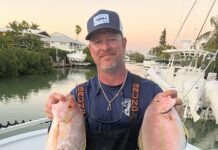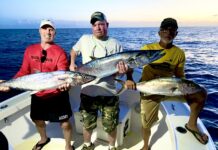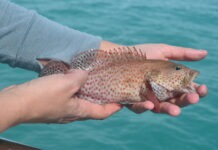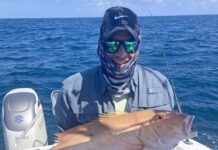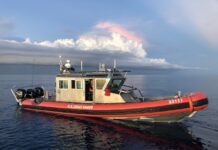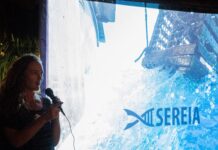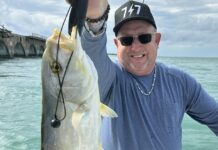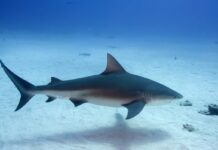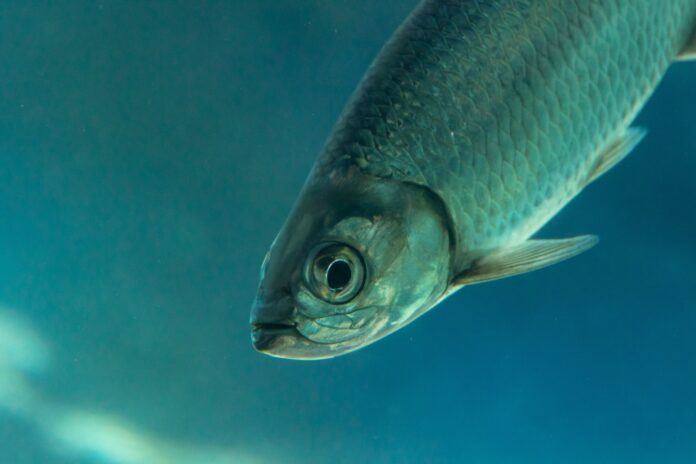
Spring has sprung, and the tarpon are showing up at the bridges. At the Seven Mile Bridge the tarpon are feeding on large pilchards and finger mullet. We like to put out one long line, about 75 yards, and one short line, about 30 yards, while anchored up with our lines going under the bridge and out to the open water.
We like to use a large, spinning rod and reel outfitted with 30-pound test mono and 60-pound test mono fluorocarbon leader with a 7.0 circle hook. We like to have an anchor ball tied to the end of our anchor line so when the tarpon strikes we can throw the ball, chase the tarpon and come back to our anchor line.
Tarpon are starting to show up at the Bahia Honda Bridge as well. The bait of choice at the Bahia Honda Bridge is typically pass crabs, but these haven’t shown up yet. During certain times of the year when palolo worms hatch, tarpon spend a few days going wild on them, with the best worm bite at Bahia Honda. Local bait shops have palolo worm lures and flies that work well during the hatch.
At Long Key Bridge we like to use live mullet for tarpon. However, Long Key Bridge is a controversial spot regarding bait. Many anglers have been targeting tarpon with dead cut bait and carcasses, which some captains and anglers say have made the tarpon “lazy.” Since they’ve been fed a lot of dead bait and chum, they won’t aggressively chase live bait like they have in the past. Many captains and avid tarpon anglers are discouraging others from using dead bait and chum carcasses to catch tarpon at Long Key Bridge so that anglers can return to the excitement of a tarpon pounding a live mullet on the surface.
Other than the bridges, we target smaller juvenile tarpon in the flats and backcountry. They love to eat pass crabs and live jumbo shrimp under a bobber.
Although tarpon is a terrible fish to eat, and is typically not table fare, you can still get a permit to harvest a tarpon. In the past, there were tarpon tournaments where the biggest fish would be weighed and killed, but nowadays, tarpon tournaments are all live-release tournaments. There’s no real need to ever kill a tarpon.
Also, in the past, if you wanted to mount a trophy tarpon, you would have to bring the actual tarpon to the taxidermist. Today there’s no need to bring the actual fish, as mounts are made with artificial molds and artwork.
Florida law states that any tarpon over 40 inches must remain in the water, even during hook removal and release. Any tarpon 40 inches or under may be temporarily handled and boated for photos and research purposes only, and must be released immediately.
To book a charter with Ana Banana, call or text Capt. Joel at 813-267-4401 or Capt. Jojo at 305-879-0564, or visit anabananafishing.com.
















